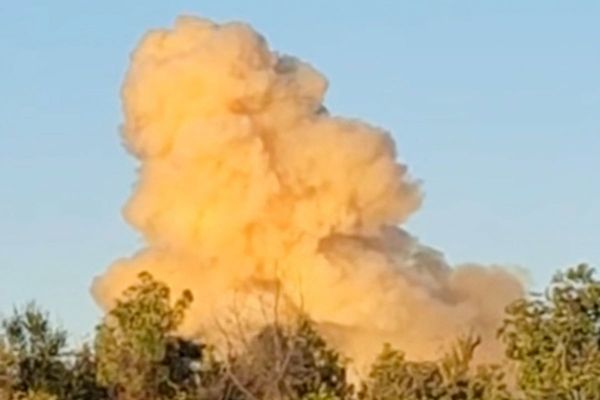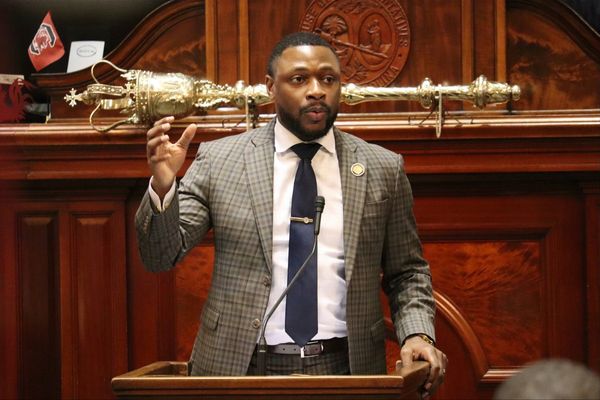
Aaron Smale reports on how artificial intelligence may provide a way for Māori to learn the dialects of their grandparents
Dialects of the Ngāti Porou version of te reo Māori that once flourished in the valleys and bays of the Tairāwhiti for hundreds of years may be about to undergo a revival thanks to artificial intelligence technology.
Barry Soutar, Ngāti Porou and Ngāti Āwa, has spent a career in the IT industry in the UK and is bringing that experience back to Gisborne. He's creating employment in the East Coast town through companies like Toro Technology, but he's also finally getting to implement an idea he’s been carrying around in his head for over 20 years.
“It's a project that I remember getting asked about 25 years ago by Api Mahuika who was at the time the chair of the (Ngāti Pōrou) runanga and we talked about dialects. They had a very traditional approach to how to revitalise dialects, and I said, ‘No, you just use computer technology.’ And he said, ‘What does that mean?’ So I explained it to him 25 years ago.
“Back then it would have cost you $10 million and it would take you 10 years to develop that. Today, you can do it for under a million bucks and it'll take you probably about one or two years. That's how technology has changed.”
Within Ngāti Porou’s distinct dialect there are around six different dialects again that are distinguishable by different hapū in different parts of the Tairāwhiti. He says East Coast iwi have some of the richest archives of written manuscripts and audio recordings of the Māori language from the 1850s onwards.
“Given that the manuscripts exist and we know the authors by hapū, you're then able to use that with artificial intelligence to say, ‘Out of the 75 grammatical structures in Māori, East Coast Māori, here are the top 20 that proliferate for these authors from Hiraharama. Here's the top 20 for the authors that come with Tīkitiki. Here's the top 20 [that] came from Tokomaru Bay.
“Then what you're also able to do is say 'Okay, out of the 15,000 words in the Williams Māori dictionary, here is the top 1000 words used, synonyms used by preference for the people from Hiruhārama, for the people from Tikitiki, from people that are from Tokomaru Bay, from Tolaga Bay.
“Then what you're able to do is take the sound files from the archive recordings from 1940 through to today of native speakers from each of those areas and say, 'Here's the pronunciation of the vowels for those people from Hiruhārama versus those from Tikitiki, from Tokomaru Bay, from Tolaga Bay. Here is the shape of the pronunciation.' Then you give your learner the opportunity to go and practise their reo until their shape becomes exactly the same as their grandfather's.
"This stuff is not rocket science, the algorithms and the way you would approach this stuff already pre-exists. Nobody's put it together.”
The project grew out of a contract with the Ministry of Culture and Heritage to tell authentic Māori historical narratives using digital technology, which evolved into telling those stories in the dialect of particular iwi. Soutar says his background in computer technology and understanding of the language and the sources has allowed him to combine the different strands of knowledge in a way an outsider couldn’t.
“You can have an overseas company come in and try and do this stuff. They'll fail, fail, fail, fail, because it's not authentic to a community. This is being led by a community, this is being led from Gisborne by real people who speak any one of the six dialects of the Tairāwhiti. They're just advantaged by having an international tech company that lives in Gisborne.”
He doesn't think it will mean those who use the technology will be using a "frozen" version of the language. He says many second-language learners of Māori speak what he refers to as a Queen Street dialect, but have a hunger to speak the dialect of their grandparents.
"We're closing the gap between the native speakers of that era and the speakers of today. They will naturally morph over time. No human will stick to a snapshot in time. They won't be sitting on it."
Soutar says the ability to take what they learn from the project and apply it to other languages will depend on the data those other languages have to feed into AI technology. But he says research into DNA has created methodologies that can be used to fill in gaps in languages.
"Even with a low amount of data you can apply algorithms to make up for a data shortage."
He says the project is one he is personally invested in, but while there is potential to scale it up, language applications are not easy money.
"It's a business model that is challenging."

While it might appear there’s a huge gap between a language that has origins that reach back thousands of years and a technology that is only recent, Māori used complex codes to navigate across the Pacific Ocean in the first place. Soutar says some of the most ancient chants and karakia are actually extremely precise navigational coordinates that go back thousands of years. The Austronesian peoples, who originated in Taiwan, navigated the largest ocean in the world to populate remote islands, for which they had to have precise and sophisticated language and understanding. Those who didn’t would not survive.
“When we've decoded some of the oldest karakia, they give us the explicit sailing instructions to an explicit island in the Austral group up south of Tahiti. It's that precise. These guys’ formulas are for success, because to succeed, you have to survive.
“In the cultures that we came from you can still see it written right throughout all of our cultural artefacts, the number one thing in our culture was the horizon.
“You look at Inuits, and they have 70 synonyms for snow.
“In Māori, the horizon line, the inch above it – the clouds – and the inch below it – the colour of the sea – we have 350 synonyms. That tells you something about a culture, why the horizon was always the number one thing.
“You don't go and tell somebody a formula that's just poetic. He's going to die. You just give him straight codified formulas for success, encoded in how you actually tell the story, and it's genealogy.
“People think of our Māori culture as something that birthed when it arrived into New Zealand from eastern Polynesia.
“It's a minimum 10,000 years old, shared with so many other people.”
*Made with the help of the Public Interest Journalism Fund*








